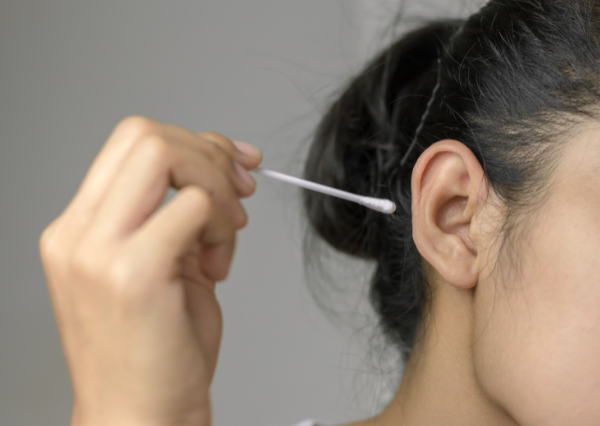
Ear wax. We all get it - some more than others. Is it as unsanitary as we think it is? Short answer - no. In fact, some earwax is actually healthy for the ears. So, what exactly does ear wax consist of and why do we need it?
The medical term for ear wax is cerumen. Cerumen is made up of epithelial cells and glandular secretions, that is, dead skin cells and an oily discharge from glands in the ear. While it may be associated with an “ick” factor, cerumen is made by the body to protect the ears. Some of the benefits of cerumen include:
- Lubrication - it is a natural moisturizer and keeps the skin of the ear canal from becoming too dry.
- Cleaning - it absorbs dead skin cells and debris.
- Antibacterial - it prevents bacteria and other infectious organisms from reaching the inner ear
- Protection - it prevents dust and dirt from getting deeper down the ear canal.
Some people generate more wax than others - the exact composition of wax can depend on age, ethnicity, environment, and diet. As mentioned, ear wax is a sign of a normal, healthy ear.
While many people still find it tempting to stick a cotton bud, bobby pin, paperclip (or similar) into their ear to remove or prevent wax build up, it’s better to leave it alone. Our ear naturally expels wax, typically through jaw movement. In fact, sticking something down your own ear to manage wax may be harmful to your ear. While you may be successful at removing some wax, you risk pushing wax further down the ear canal. This can cause wax to become impacted, and may result in tinnitus, a full sensation in the ear, dizziness, pain, coughing, drainage, itching, an odor coming from the ear, ear infection, and even temporary hearing loss. For many people, the ear’s natural self-cleansing mechanism is all that’s required to manage wax. However, some demographics are more at risk of significant wax build up, including the elderly, cognitively impaired individuals, and hearing aid users. If the ear’s self-cleaning mechanism becomes disrupted, then wax build up can become problematic.
The first port of call in managing wax build up is to try a cerumenolytic (i.e. some sort of drop to soften and break down wax). It is important to ensure that you don’t use cerumenolytics if you have a perforated eardrum or grommets. Some people can also react to the ingredients in these solutions. Additionally, some people may have some local irritation or a rash; prolonged use can also lead to a superinfection. There are 3 main types of cerumenolytics:
- Water-based agents, e.g., Waxsol, hydrogen peroxide. These have a softening effect by drawing water into the wax and breaking it apart.
- Oil-based agents, e.g., olive oil, CleanEars, Cerumol. These lubricate and soften wax without breaking it apart.
- Non-water, non-oil-based agents, e.g., Ear Clear. These soften and loosen wax.
While cerumenolytics can be effective in managing wax, if the build up is significant, or if the shape of your ear canal creates a barrier that stops wax from coming out easily, they will only serve as an aid to softening wax so that a professional can remove it safely for you.
So, what are your options if cerumenolytics are not effective? Firstly, stay away from other DIY solutions that promise to remove wax. These include ear candles (research on their effectiveness suggests that they increase wax production due to wax deposited by the candles themselves) and spiral ear cleaners (these are little more than expensive cotton buds). Once wax becomes a significant issue that doesn’t respond to cerumenolytics, you will need the assistance of a professional to safely remove wax for you. GP practices typically only offer wax removal by water irrigation. While this can be successful, it’s not exactly pleasant for you to have water flushed down your ear canal. In fact, it can potentially lead to ear infections, perforated eardrums, and damage to the middle ear. One in five medico-legal cases in Australia in 2003 involving GPs was related to water syringing.
Ear Nose and Throat (ENT) specialists offer wax removal, and typically use mechanical tools to extract wax, or microsuction. These methods of mechanically removing wax are very safe and effective. The actual method used by the specialist is usually determined by the consistency and condition of the wax in your ear. However, waiting for an ENT appointment can be lengthy, not-to-mention expensive. Fortunately, audiologists are well-placed to offer this service in a safe and effective manner. Audiology Australia, the professional body for Australian Audiologists, endorses wax removal as part of service provision in their scope of practice. While not every audiology clinic will offer wax removal, it is becoming more commonplace as clinicians further develop their clinical skills and knowledge to provide a full range of services.
Value Hearing offers wax removal for anyone in need of ear wax management, whether you have hearing aids or not. For more information on Ear Wax removal click here.
iIf you’re experiencing issues with wax build up in your ears, please feel free to contact us to book an ear wax removal appointment. Existing clients will, of course, still be offered ear wax removal as part of their ongoing care.

